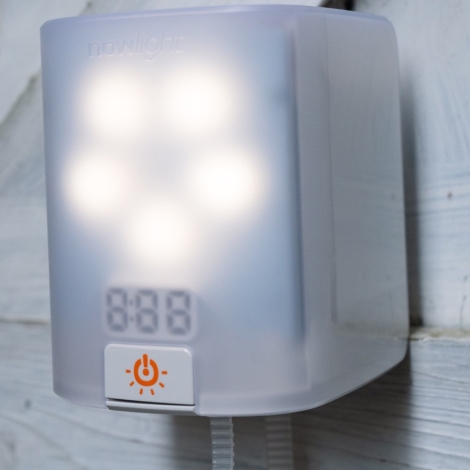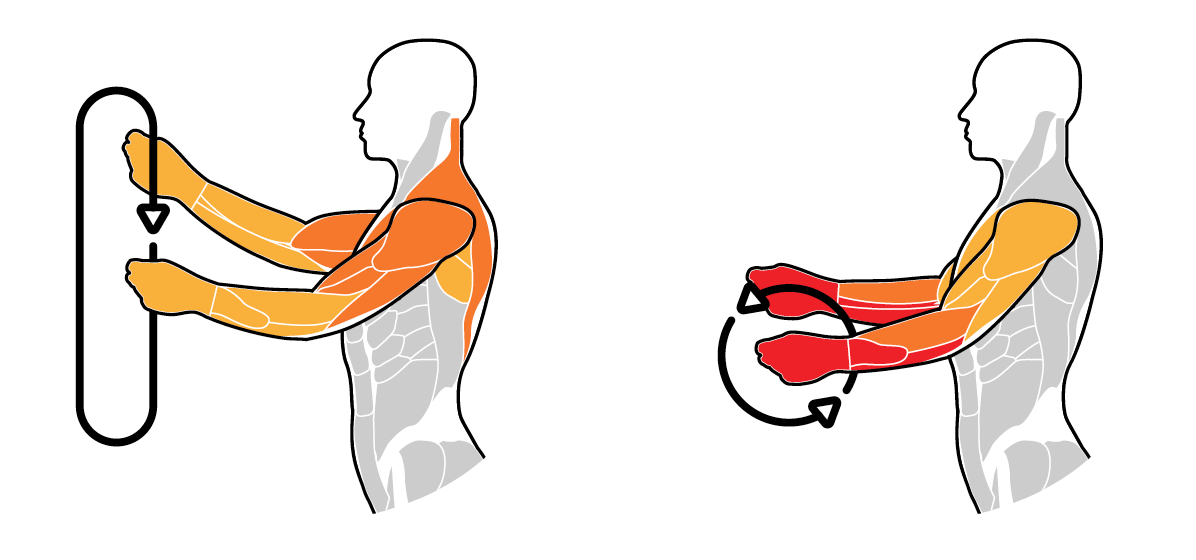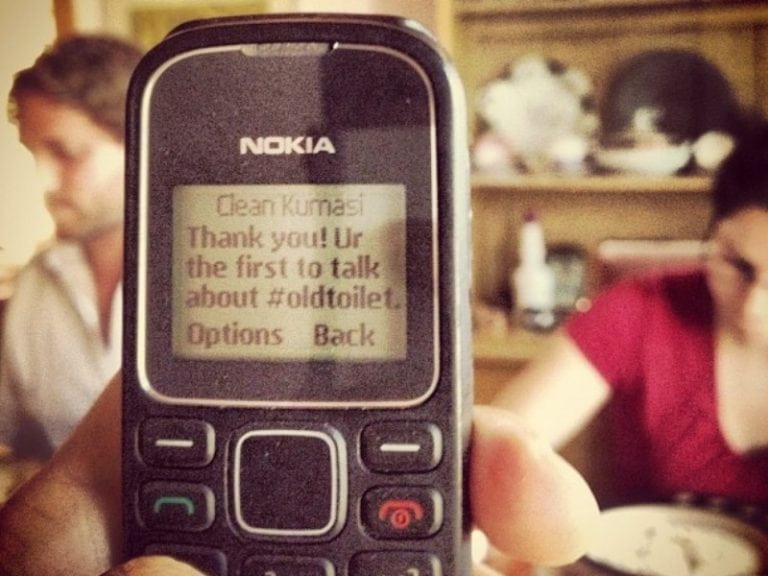Editor’s note: From GravityLight to NowLight, a startup has overhauled its Internet-famous gravity-powered light. The result is a pivot in design and business model spurred by changing technology and user research. NowLight is what happened after rounds of iterative prototyping in response to market needs and improvements in solar and mobile technologies.
In 2009, a nascent industry had sprung up manufacturing and distributing small solar lanterns to serve the two out of three people without electricity access in Sub-Saharan Africa. The problem was that the photovoltaic panels and batteries that powered the products accounted for more than 60 percent of their cost. The expense of those two technologies compromised the efficacy of the products in emerging markets, pushing up their prices out of range for many of the people who needed them.
Then, as now, most potential customers of off-grid light and energy products earned less than (USD) $3 per day. Without electricity, many of those families instead rely on kerosene lamps for lighting, and purchasing kerosene can consume up to 20 percent of household’s income. Furthermore, kerosene fumes can cause respiratory diseases, burns and fires, and each kerosene lamp emits 370kg of carbon dioxide per year.
Confronted with that reality, the UK charity SolarAid approached two product designers, Martin Riddiford and Jim Reeves, leading them to consider sustainable low-cost alternatives to kerosene lamps.
Martin and Jim decided to look beyond solar and battery powered devices to consider an even more ubiquitous energy source: human power. This led to the invention of GravityLight, a unique off-grid light powered by the lift of a weight.
How it works
A bag, suspended from GravityLight by a cord, is filled with weight and lifted. As it gradually descends, it turns a gear train, driving a motor that powers LEDs.
It takes only seconds to lift the weight that powers GravityLight but it will create 20 minutes of light on its descent. Users can lift the weight again for continuous light, on demand with no reliance on sunlight or batteries.
See GravityLight in E4C’s Solutions Library
GravityLight is installed at around 6ft/1.8m from the ground. The bag is filled with 12kg of weight – such as rocks or sand – and raised with a pulley system that reduces the pull force required to lift the bag to 3kg. The weight gradually descends (about 1mm per second), turning a drive sprocket at high torque (force) and low speed. GravityLight generates just under a deciwatt (0.1 Watt) of electricity, which power LEDs to light a space.
Crowd-powered
By November 2012, a working prototype had been produced. Through a crowdfunding campaign we raised $399,590 to invest in the tooling, manufacture and trial of GravityLights with off-grid families in Africa and Asia. Based on the feedback from these trials, we spent two years improving GravityLight, making it easier to ease, more robust and capable of providing brighter light. A second crowdfunding campaign raised a further $400,000 to enable us to pilot GravityLight ‘GL02’ in Kenya. This involved building an in-country team and partnerships to test the commercial viability of GravityLight at scale and the optimum routes to market, gathering feedback from ‘early adopters’ throughout.
Technology improvements forced a pivot
During the course of GravityLight’s development and trials, significant changes were underway in the off-grid solar industry. Advances in lithium battery and photo-voltaic technology, combined with steep reductions in their cost, created new opportunities to provide off-grid households with solar energy systems at affordable prices. At the same time, mobile phones skyrocketed in popularity. Today, mobile phones have an 87 percent penetration in Kenya even while only 65 percent of the Kenyan population have access to electricity. It light of this, it was unsurprising that the vast majority of GravityLight users wanted a device that could offer mobile phone charging as well as lighting.
While these dramatic improvements in solar and mobile technologies have been a boon to GravityLight’s potential customers, they threatened to make our product obsolete. GravityLight does not produce enough power to efficiently charge a mobile phone. To achieve the necessary power output, we would need to hugely increase the amount of weight suspended under GravityLight (which would be difficult for users to raise and possibly a safety hazard) and/or increase the speed at which the weight falls (which is highly impractical as GravityLight would only produce power for a minute or two before you would need to raise the weight again).
Ultimately, we made the difficult judgement that GravityLight would not compete on price or performance with off-grid solar over the long-term However, our approach of harnessing human effort offered an important advantage over solar products: sunlight independence. A solar product can’t be charged at night and because a solar panel must necessarily be outdoors while charging, it may be vulnerable to theft in some areas.
With the support of Innovate UK’s Energy Catalyst program, we began researching different approaches to harnessing human effort. Our goal was to build a product that could offer GravityLight’s weather independence but with the higher power output required by users.
Many existing devices leverage human effort as an energy source, but in general these devices are inefficient and impractical. For example, imagine a typical wind-up torch, the user holds the device in one hand and cranks with the other; only using the muscles in one arm to generate power. Typically, a user can generate around 3-5 Watts of input power with a wind-up torch. However, the cranking motion relies heavily on small muscles in the forearm, which means it is difficult for the user to charge the device for an extended period of time. In short: wind-up torches don’t produce very much power and they are uncomfortable to use.
Better biomechanics for more power
Our new product ‘NowLight’ is designed to be fixed in place and the user pulls down on a loop of plastic cord in a hand-over-hand motion. This approach allows users to generate up to 20 Watts of input power; four times more than a typical wind-up torch. Just one minute of pulling on NowLight’s cord can produce up to two hours of light or enough power for 15 minutes of talk-time on a mobile phone. Furthermore, when charging NowLight, users use larger muscle groups in the upper arms and shoulders. This improved biomechanical design means that user can comfortably charge NowLight for longer periods of time.
NowLight itself can provide up to 160 lumens of light, over ten times the light output of GravityLight. The main NowLight unit can also power additional ‘SatLights’, with peak system output of over 500 lumens. NowLight also includes a USB output which allows users to charge their mobile phones. Unlike GravityLight, NowLight stores energy created by the user in a battery rather than by raising a suspended weight. We chose to use Lithium Iron-Phosphate batteries for their stability and long lifespan. In typical conditions the battery should last for 1,500 – 2,000 cycles.
If you can’t beat them…
Given the majority of off-grid households are in sunny sub-Saharan Africa and South Asia, and that millions ‘on-grid’ experience prolonged power-cuts, NowLight has been designed with 3 charging options for maximum flexibility. NowLight is supplied with a 3W solar panel and a mains adaptor. This allows our users to make the most of sunlight and grid electricity where they are available but crucially, they do not have to rely on them.
As with the development of GravityLight, the R&D process for NowLight has been informed by extensive user testing. We used early prototypes to run a trial in Korogocho, an urban community in Nairobi. Working with the Red Cross we also tested pre-production samples in refugee camps in Rwanda and Uganda.
Because NowLight has much greater functionality and power output than GravityLight, we also believe there will be a significant market for the product in higher income countries. In 2018, we ran an Indiegogo campaign for NowLight, selling 1500 NowLights to customers in over 35 different countries. We fulfilled the campaign in February and our supporters also donated over 500 NowLights to the Red Cross, who will distribute them in refugee settlements.
We are looking forward to the broader commercial launch of NowLight and have begun accepting pre-orders for the product through our website. In addition, we are preparing to start market trials in Pakistan and D.R. Congo.
Was gravity-based power a mistake?
There are many lessons we could draw on in our journey from GravityLight to NowLight, but the question we are asked most often is whether GravityLight was misguided. In addressing this, we can neatly tie up the past and the future of the business. Given that we no longer use gravity as a means of storing energy, we are sometimes asked whether we think it was a mistake to take a gravity-based approach rather than building a solution that incorporated a battery from the outset.
It is certainly true that gravity-based power storage does not scale well in a domestic context. Even providing enough power to charge a mobile phone would require a large amount of weight falling at considerable speed, which is unattractive when the same amount of energy could be stored in a chemical battery that would easily fit in the palm of your hand.
However, although the application of gravity-based energy storage is probably limited to task lighting in a domestic context, there are real possibilities for gravity-based storage at industrial scale. Companies such as Gravitricity (https://gravitricity.com) are building huge gravity batteries, storing up to 10 MWh of energy and with peak output of up to 20MW. These could provide a very effective means of storing excess energy generated from renewables, without the cycle limits, degradation or sustainability concerns associated with chemical batteries.
Furthermore, although our GravityLight cannot meet the energy needs of households with mobile phones, it has always enjoyed real advantages over solar lanterns. The necessity of outdoor charging in hot and dusty environments means that the lifespan of solar lanterns in sub-Saharan Africa is sometimes only measured in months. By contrast, we know that many GravityLights are still in daily use in Kenya, years after they were distributed. The independence from sunlight is also a real benefit, especially in areas that have few sunlight hours or where solar panels are particularly vulnerable to theft.
There can be no doubt that off-grid solar products have been of enormous benefit, providing millions of people with access to electricity. This is why NowLight comes with a solar panel and uses a battery for energy storage. Yet by also incorporating a uniquely efficient means of harnessing human effort, we offer a solution that offers all the benefits of off-grid solar, while avoiding its most obvious weakness.
Chris Skilton is CEO of Deciwatt, the London, UK-based startup that manufactures NowLight.





Gravity light was always a huge mistake – during its crowd-funding any sane analysis said its cost:light ratio was going to be terrible, and when it came out it cost around $15 retail compared to for example the GreenLight power lights which provided 120x as much power for around twice the cost, and that was 8 years ago, and solar has come down in power since then.
Claiming 160 lumens by comparing it to Gravity Light is disingenous, it should be compared to commonly available solar lights typically running anywhere from 650 to 1800 lumens. Since cost is the main factor impeding adoption, this light needs to be compared – including cost – to its direct competitors.
i want to get a gravity light
Hi Chris,I would love to connect with you.
NowLights are sold on Deciwatt’s website: https://deciwatt.global/shop